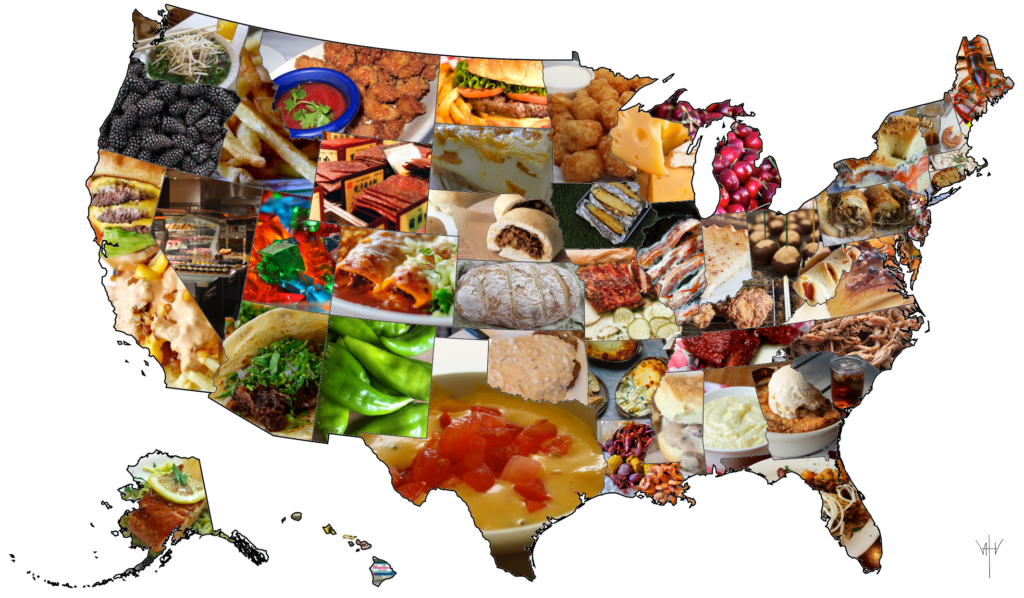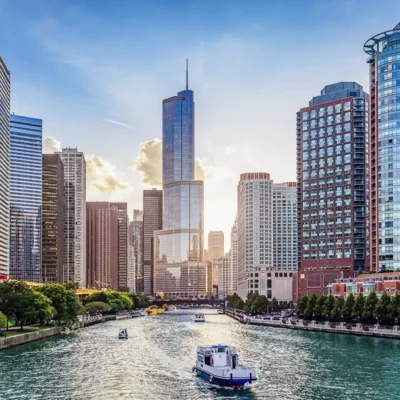American cuisine has come a long way. What started as regional home-cooked meals has now become one of the most globally influential food cultures. The journey of American food reflects the country’s history, immigration, diversity, and creativity. Today, dishes like hamburgers, fried chicken, and mac and cheese are not just American classics—they’re loved worldwide.

But how did this happen? How did simple regional foods turn into global sensations? Let’s explore the roots, changes, and the current state of American cuisine.
The Roots: Diverse Regional Cuisines Built on Immigrant Culture
American food was never just one thing. Each region had its own flavors, influenced by geography, agriculture, and migration.

- Southern Cuisine is famous for fried chicken, cornbread, collard greens, and gumbo. It reflects African, French, and Native American roots. Learn more about Southern Food History.
- Northeastern Cuisine, especially in New England, is known for clam chowder, lobster rolls, and baked beans. It’s shaped by British and Irish settlers and coastal life.
- Midwestern Cuisine brings comfort food like meatloaf, casseroles, and deep-dish pizza. It developed from farming communities and immigrant groups such as Germans and Scandinavians.
- Southwestern Cuisine mixes Mexican, Native American, and Spanish influences with dishes like chili con carne and tacos.
- West Coast Cuisine, including California and Pacific Northwest food, highlights fresh ingredients, seafood, and Asian and Latin flavors.
These regional foods created a rich food landscape across the U.S.
The Immigration Impact: A Melting Pot of Flavors
As more immigrants arrived in America, they brought their own food traditions. These new flavors merged with local ingredients, creating new dishes.
- Italian-Americans gave us spaghetti and meatballs, pizza (American-style), and lasagna.
- Chinese immigrants introduced stir-fry, chop suey, and eventually, General Tso’s chicken.
- Mexican flavors led to the popularity of tacos, burritos, and enchiladas, especially in the Southwest.
- Jewish immigrants brought bagels, pastrami, and matzo ball soup to cities like New York.
These foods were first popular in specific areas, but over time they spread and became part of American identity. Visit Smithsonian’s Food History for more insights into how immigration shaped food culture.
The Rise of Fast Food and Pop Culture Influence
In the 20th century, American cuisine changed again—this time, through fast food. Companies like McDonald’s, KFC, and Burger King made American food available everywhere. This changed how people ate, not just in the U.S., but around the world.
- The hamburger became a symbol of America.
- French fries, soft drinks, and milkshakes became common side items.
- Drive-thrus and takeout culture changed how restaurants worked.
With the help of Hollywood, TV shows, and music, these foods became iconic symbols of American culture. As fast food chains expanded globally, so did American-style food. Learn more about this shift in this National Geographic article.
The New Wave: Fusion, Farm-to-Table, and Health Trends
Today, American cuisine continues to evolve. People want fresh, healthy, and global food experiences.
- Fusion Cuisine mixes American food with global flavors—like Korean BBQ tacos, sushi burritos, or Indian pizza.
- Farm-to-table restaurants focus on fresh, local ingredients with simple preparation.
- Vegan and gluten-free options are now common, reflecting health-conscious trends.
Chefs from diverse backgrounds are now celebrated, bringing authenticity and storytelling to their dishes. Food trucks, cooking shows, and social media have also helped spread new ideas and trends quickly.
America’s Global Food Influence
American food is now part of the global food scene. From fast food to gourmet dishes, its impact can be seen in many countries.

- McDonald’s and Starbucks are present in over 100 countries.
- American BBQ is gaining popularity in places like South Korea, Brazil, and Australia.
- American breakfasts—with pancakes, bacon, and eggs—are now served in cafés around the world.
At the same time, international chefs have brought their own versions of American dishes to life, adding local spices and techniques. This global exchange keeps the cuisine growing.
The Future of American Cuisine
The future of American food looks exciting. With climate change, sustainability, and plant-based diets gaining importance, American cuisine will keep adapting.
We may see:
- More plant-based alternatives, such as lab-grown meat and dairy-free products.
- Sustainable practices, including zero-waste cooking and regenerative farming.
- Digital kitchens and AI in food production for smarter, faster service.
And most importantly, younger generations are showing interest in cooking traditional family recipes, keeping cultural food traditions alive while embracing new global tastes.
Conclusion: A Story of Culture, Change, and Creativity
American cuisine is not just about burgers and fries. It’s a story of history, migration, culture, and innovation. From humble regional dishes to global fame, the food journey of the U.S. is one of continuous transformation.
As people travel, connect online, and share recipes across cultures, the definition of American food keeps expanding. It’s not just about where the dish came from—it’s about who’s cooking it, how it’s evolving, and how it brings people together.
If you want to explore more about American food traditions and their future, check out these helpful resources:
- History of American Food – PBS
- Culinary Institute of America
- The Rise of American Cuisine – Serious Eats
Also Read – Best 12 Rooftop Bars in the USA You Must Visit





